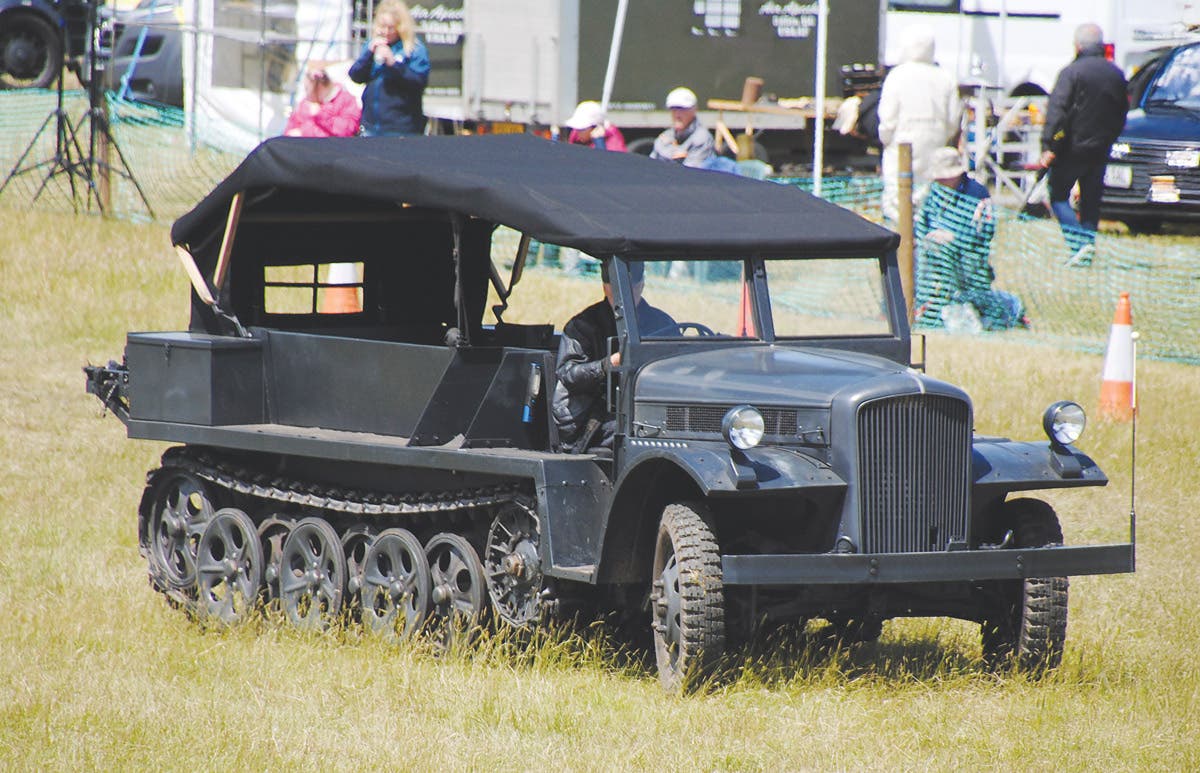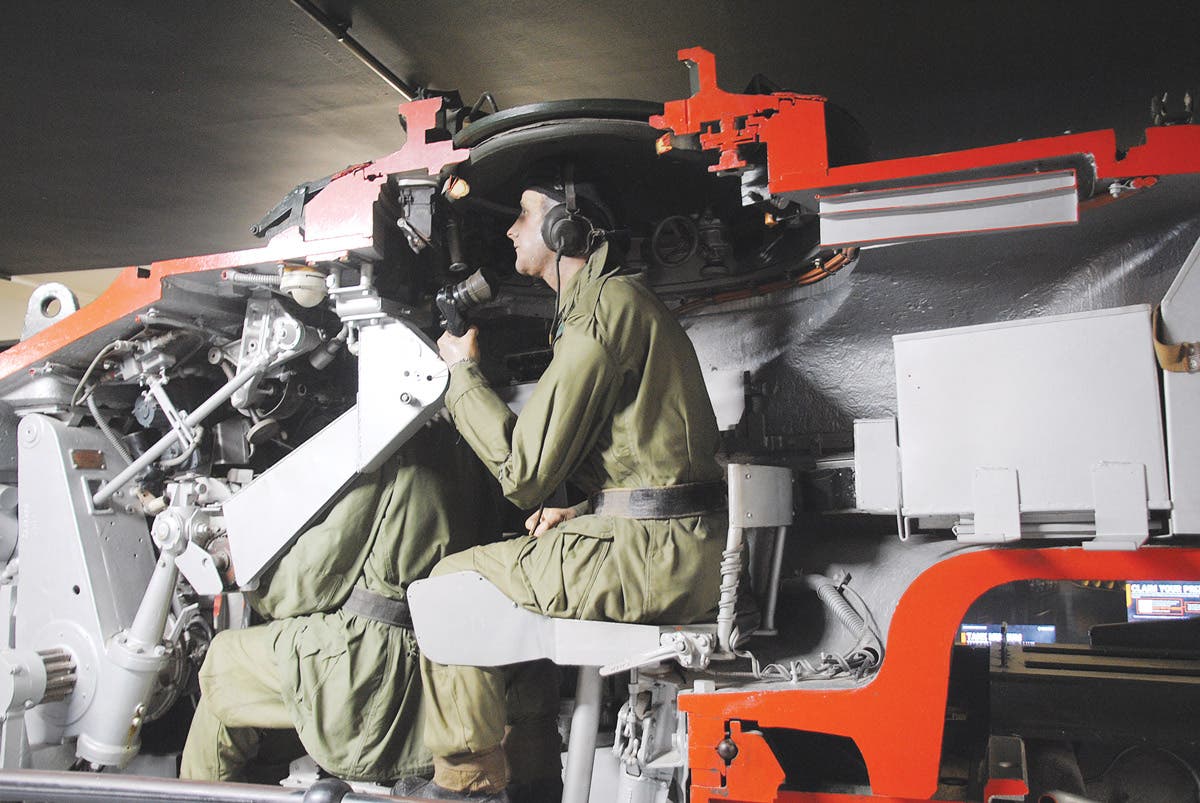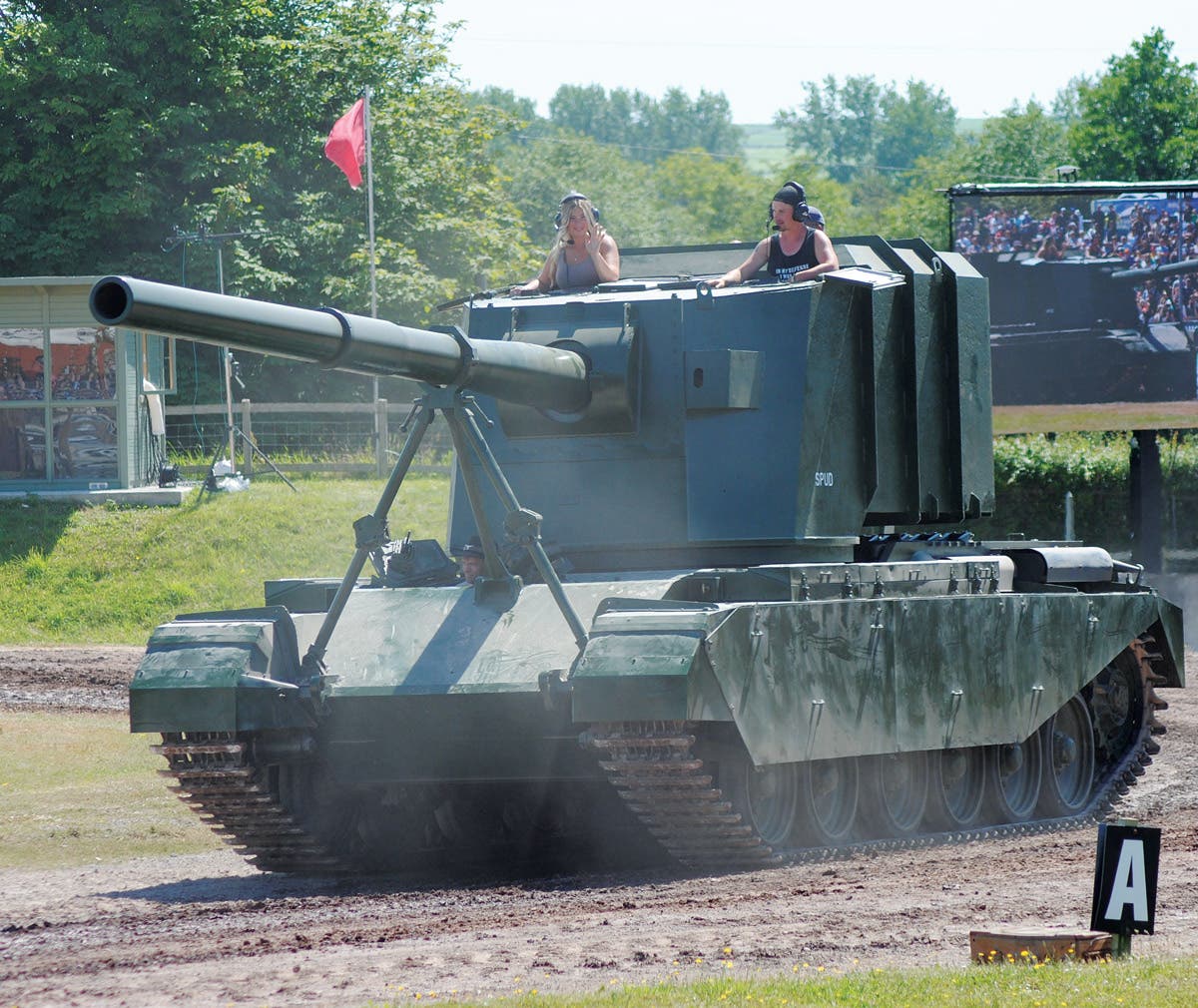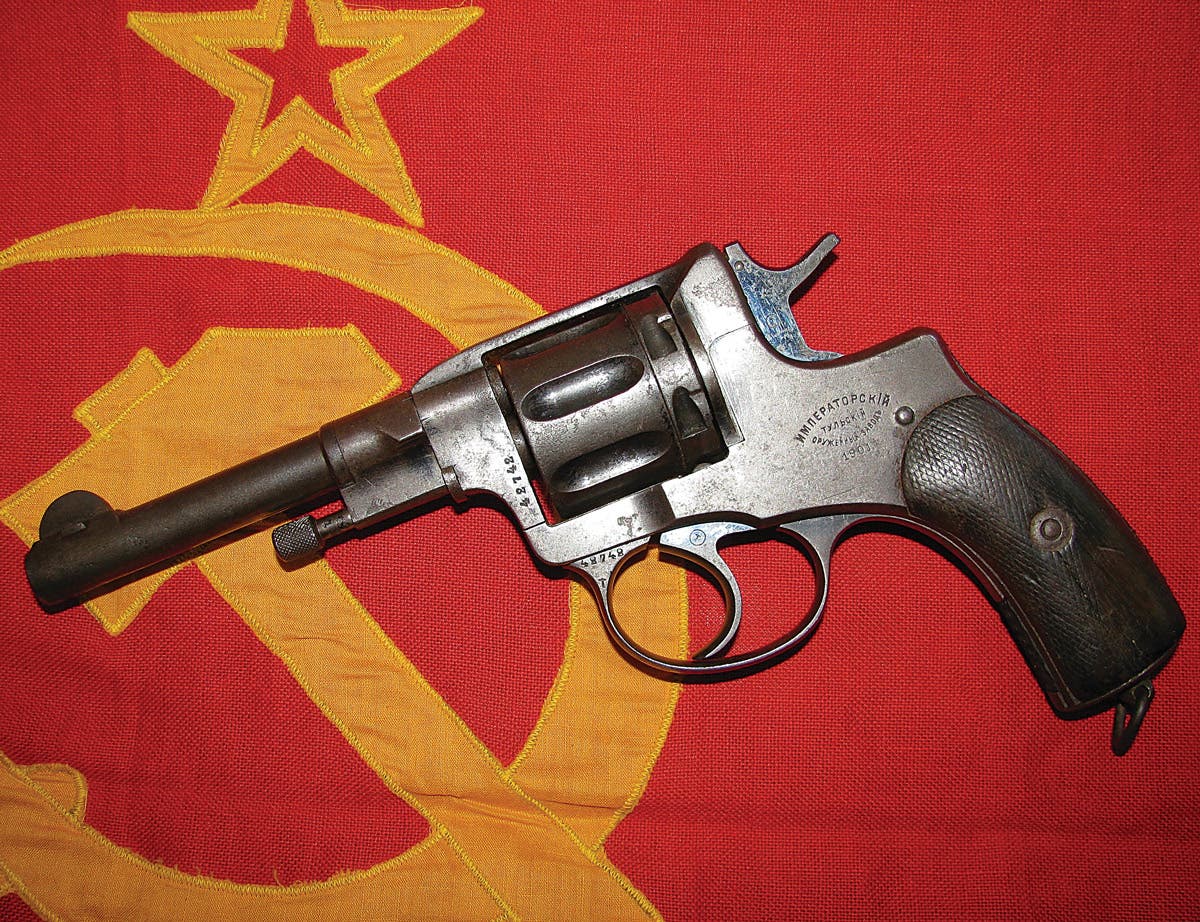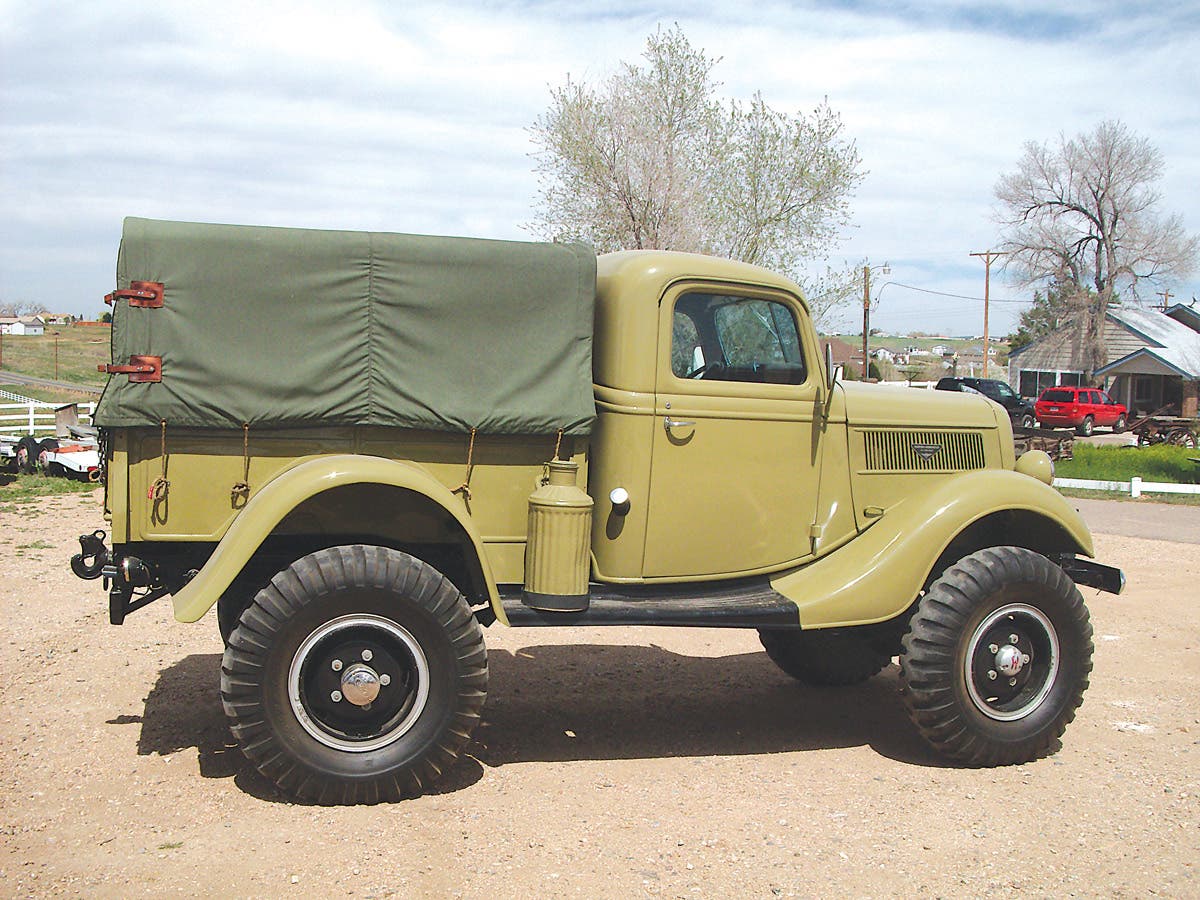Mini Jeeps and Crawlers: Crosley’s Compact WWII Machines
The car maker tried to help the WW2 United States War effort by producing Jeeps and crawlers
The best year to introduce a new automobile was not 1939. The Depression still had a tight hold on the economy, and war loomed on the horizon. But multi-millionaire Powel Crosley, Jr. had been dreaming of becoming an automobile manufacturer for more than four decades. After three years of developmental work, the automobile bearing his name, “Crosley,” was ready to go into production and nothing would stop him from starting the assembly line.
Crosley had attempted to get a car into production several times, beginning in 1907. Each attempt had failed because he didn’t have enough capital. Now, having amassed a vast fortune as a radio manufacturer and broadcaster, Crosley was ready to realize his dream. The narrow, parrot-nosed Crosley made its debut at the Indianapolis Motor Speedway in May, 1939.
Despite economic conditions, prospects for the Crosley were good. Rolling on an 80-inch wheelbase, the Crosley was powered by a 2-cylinder, air-cooled engine built by the Waukesha Engine Company. This 13½-horsepower powerplant delivered up to 50 miles per gallon and could exceed 50 miles per hour under favorable conditions. Its short wheelbase and 40-inch tread made it America’s second-smallest production car (the American Bantam, with a 75-inch wheelbase, was the smallest). The Crosley coupe carried an appropriately small price: $325 for a coupe, $350 for a sedan.
CROSLEY’S “ARMY CARS”
Crosley soon added equally small station wagons and pickup trucks to the Crosley Motors line. And, mindful of the potential for America’s entry into the war in Europe, he began sketching ideas for an “Army car” based on the Crosley, one that could be used to move troops quickly in the field. His concept vehicle was a basic Crosley sedan without a top, doors, or sides, powered by the same two-cylinder Waukesha engine used in production Crosleys. The back seat was a bench on which passengers could ride facing the front or rear, with grab bars on either side.
In this configuration, the car could carry four fully-equipped soldiers who, not having to deal with doors or other obstructions, could get in and out of the car quickly. Having shed so much weight, the rear-wheel drive Crosley Army car could haul quite a bit more than the standard Crosley.
At about the same time, the American Bantam Company was preparing to collaborate with the U.S. Army on a design for a small four-wheel drive vehicle, the Bantam Reconnaissance Car, or “BRC.” Crosley may or may not have known about this; if not, he would hear of it soon enough.
The Army car development began at Crosley’s own initiative, but he was able to use his influence and contacts to interest the military in it. The Army requested a prototype, which was delivered to Fort Holabird, Maryland, in May 1940, where it was informally dubbed the “Mosquito.”
By this time, Crosley was certain that America would be entering the war. His company, the Crosley Corporation, had already been contacted by the U.S. Navy regarding contingency plans for wartime production.
Accordingly, Crosley designed another vehicle for the Army to test, something he called the “covered wagon.” This was much like the station wagon version of the Crosley, but with the wood body panels and top replaced by easily removable canvas sides and top. The rear seat was likewise removable. Crosley was particularly proud of the covered wagon idea and put a civilian model into production. He tagged it a “sport utility vehicle” at the time, the very first use of the term.
In September, the Mosquito was compared with Bantam’s BRC. Larger than the Crosley and with more horsepower and a higher ground clearance, the BRC was chosen over the Mosquito as the Army’s all-purpose vehicle for exactly those reasons—and its four-wheel drive. (Crosley participated briefly in the bidding for jeep production but, like Bantam, lost out to Ford and Willys.)
CROSLEY'S WARTIME PROJECTS
Even as the BRC was selected as the Army’s all-purpose vehicle, Crosley was at work on two military motorcycles: a two-wheeler and a three-wheeler. As with most things Crosley, these had some unconventional features. On the two-wheeler, the gas tank was built into the rear fender rather than the frame. The three-wheeler (referred to as a “motor tricycle”) featured a cargo compartment and a dual rear bench seat. Each was powered by a two-cylinder engine and featured shaft drive.
Crosley turned the prototypes over to the Army for evaluation in the Fall of 1940. The Army ran the three-wheeler some 2,000 miles in rough country, and it performed admirably. Based on its testing, the Army requested certain modifications. Crosley put his engineers to work on the changes and resubmitted the motorcycles in January 1941.
Having wholeheartedly embraced the jeep, the Army was not quite ready to write off the Crosley Mosquito and Covered Wagon. The Crosley Motors assembly line in Richmond, Indiana, produced a number of each for shipment to Camp McCoy in Monroe County, Wisconsin. Traditionally a center for heavy mobile units (beginning with horse-drawn artillery in the 1800s), the post was a training home for mechanized units. The Army felt McCoy was an appropriate testing ground for motorized vehicles like the Mosquito and Covered Wagon.
In February, 1942, Crosley Motors ceased civilian production. Since beginning production early in 1939, the company had turned out just 5,757 Crosley cars and pickup trucks. Although most of the plant was devoted to building gun turrets for Martin PBY aircraft, vehicle production did not cease entirely; Powel Crosley, Jr. was a long way from running out of ideas for military vehicles, and he was not about to let Crosley Motors stand idle.
THE CROSLEY PUP
While the Mosquito and Covered Wagon were still undergoing tests at Camp McCoy, Crosley engineers began designing a lightweight four-wheel drive vehicle called the Crosley “Pup.” Officially designated the CT-3, the Pup was essentially a miniature Jeep, based on the Crosley auto chassis and powered by a 12-horsepower Crosley Waukesha engine of improved design. The Pup had a special transfer case that gave it six forward and two reverse speeds, and featured dual universal joints. Fenders made from stiffened canvas and minimal interior fittings further reduced weight.
The Pup was intended to provide rapid transportation on the battlefield, and to be easily transportable itself. The size was dictated by a requirement that it be light enough to drop by parachute, something not very practical with a Jeep. Fully fueled, the Pup weighed about 1,000 pounds—less than half the weight of the Jeep.
Due to the Pup’s narrow configuration and short wheelbase, it could carry only two passengers. At that, things were cramped; the passenger sat beside and slightly behind the driver, with his legs extended next to the driver’s seat.
The first Pup was delivered to Fort Benning, Georgia, for tests in February 1943. The Army ordered and received 36 Pups at several posts before the end of the year. But the Pup didn’t fulfill the Army’s expectations, and no more were ordered. Only a few were sent to Europe, and most of the rest ended up scrapped after the war. Several are known to be in the hands of collectors today.
Yet another Crosley military vehicle called the “Bull Pup” was developed and delivered to the Army in prototype form. This vehicle, a light scout car, fared no better than the Crosley Pup.
DUCKS AND MULES: TRACKED CROSLEY VEHICLES
Crosley had many more ideas for military equipment. Fascinated by tracked vehicles, he decided to build some small-scale versions for specialized tasks, each using the 12-horsepower Waukesha engine that powered Crosley automobiles. First was a small engine surrounded by twin cleated tracks. It was steered with long handlebars on which the controls were mounted—similar to today’s walk-behind roto-tillers. Called the Crosley Snow Tractor, it could pull heavy loads through snow or mud. This was tested and used by the Army in Alaska.
Next was the Crosley Tug, a dual-tracked vehicle with a rear seat. It could be used to tow artillery on rough or muddy ground. The four bogie wheels inside the tracks were equipped with rubber tires, so it could be converted to a roadworthy vehicle. A variation of the Tug featuring a cargo area and front seating was dubbed the Track-Laying Mule. It had an optional trailer that also rolled on tracks.
A six-wheel adaptation of the Tug with larger cleats on the tracks was built for use in snow. It was called the Crosley Snow Tug. Completing this lineup was a Self-Propelled Gun Mount, a low-slung version of the Tug with a seat and a .50-caliber gun.
Each of these vehicles was tested by the Army. The snow vehicles, along with Crosley Pups, were sent to Colombian Glacier in Alaska and at Camp Hale in Colorado for evaluation.
Powel Crosley, Jr. maintained an active interest in the vehicle testing, often traveling to test sites to collect comments and criticism on his vehicles. In the winter of 1942 Crosley visited Camp Hale for a week, and one day went for a hike in the mountains with some officers from the post. He was interested in scouting out future hunting possibilities, he told his companions, and also wanted to see how the soldiers were living. A detachment from the 10th Mountain Division were out on maneuvers and Crosley visited their glacier camp, where he spent most of the afternoon by a campfire, swapping stories with the rangers.
Darkness was closing in when the small party prepared to return to the Army post. Just before departing, Crosley called several enlisted men over and handed them a stack of cash. “Take this and have a beer blast,” he told them—which is exactly what they did. According to one of the soldiers, the group drank 43 cases of beer and, in Crosley’s honor, sang bawdy songs for three hours without repeating a line.
Other Crosley vehicles underwent testing at the Army's Aberdeen Proving Grounds. Most Crosley vehicles received positive ratings, but the military didn’t order any of them in large quantities. This was probably a matter of the Army preferring to keep things simple by using the Jeep in as many applications as possible, as opposed to trying to field too great a variety of specialized equipment.
The Crosley Corporation did better with non-automotive military products. Before the war ended, it would produce huge quantities of bomb-release shackles, gun turrets, airplane-tracking radar, anti-aircraft gun sights, military radios, and portable electric generators at its factories in Cincinnati, Ohio, and Richmond, Indiana. The engine that powered the generators was of a radical new design, with a block and head made from steel stampings that were brazed together. Nicknamed the Cobra, the lightweight four-cylinder engine produced 35 horsepower, but weighed only half as much as comparable engines. Crosley bought an exclusive license to produce the engine.
Crosley was also one of three companies that assembled the top-secret proximity fuze—a miniature radio transmitter/receiver that caused anti-aircraft shells to detonate when they were within a preset distance from their targets.
Toward the end of the war in 1944, Crosley built one final prototype military vehicle: an amphibious tracked vehicle called the Crosley “Duck.” Powered by the Cobra engine, the bathtub-shaped Duck traveled on land or water at will and was large enough to carry seven people. A special trailer—also on tracks—could be hooked up so the jaunty little craft could tow additional passengers or cargo.
Crosley Motors engineer Paul Klotsch designed the Duck for the Army, but the war was over before the one-off prototype could be evaluated. The Duck was shown in public only once, on January 8, 1945, when Powel Crosley, Jr. invited reporters and photographers to Cincinnati's Public Landing on the Ohio River to watch it go through its paces.
Crosley, Klotsch, and an Army captain rode the craft up and down the shoreline and into the Ohio River as a small crowd watched. The steel-hulled amphibian featured a wooden ship’s wheel at the pilot’s post amidship. Following the demonstration, the Duck and its trailer joined other Crosley vehicle prototypes in storage. Presumably they were scrapped not long thereafter.
After the war ended, Crosley Motors raced to get into civilian production. The new Crosleys began rolling off the assembly line in May, 1946. Thanks to its fuel economy and the fact that the major automakers took two years or more to start production, the Crosley enjoyed some success early on, but serious problems with the Cobra (now rated at 26 horsepower) resulted in the company having to replace the engines in most of the cars it produced between 1946 and 1948. The new engine, with a cast-iron block, proved to be a superior product—so much so that dozens of companies were soon using it in a variety of non-automotive applications. Crosley Motors also secured a government contract to produce thousands of the cast-iron block engines, to be used to power generators.
Still, the Cobra left Crosley with a bad reputation, and as soon as gasoline rationing was lifted and Detroit’s chromed monsters became plentiful, the car-buying public turned their backs on Crosley’s compacts. As sales declined, Powel Crosley tried to change his company’s sagging fortunes by introducing new models, among them a sports car called the Hotshot and a two-wheel drive general purpose vehicle apparently derived from the Crosley Pup. Neither was able to save the company. Nor was an updated version of Crosley’s wartime “Mosquito.” This was a 1950 Crosley station wagon with the top and sides removed. Two side-facing bench seats were placed in the back. Including the driver and front passenger, the car could carry six people.
Several of these were built under development contract, but instead of going to the Army they would end up with the U.S. Air Force, which put them to work as personnel carriers at Eglin Air Force Base in Florida. The large order for which Crosley hoped did not materialize.
Powel Crosley, Jr. sold out his controlling interest in Crosley Motors to Aerojet General in 1952. The company had bought the business mainly for the military contract to produce Crosley cast-iron block engines, and this last vestige of Crosley’s interest in military vehicles remained in production in various versions well into the 1960s.
You may also enjoy
*As an Amazon Associate, Military Trader / Military Vehicles earns from qualifying purchases.




